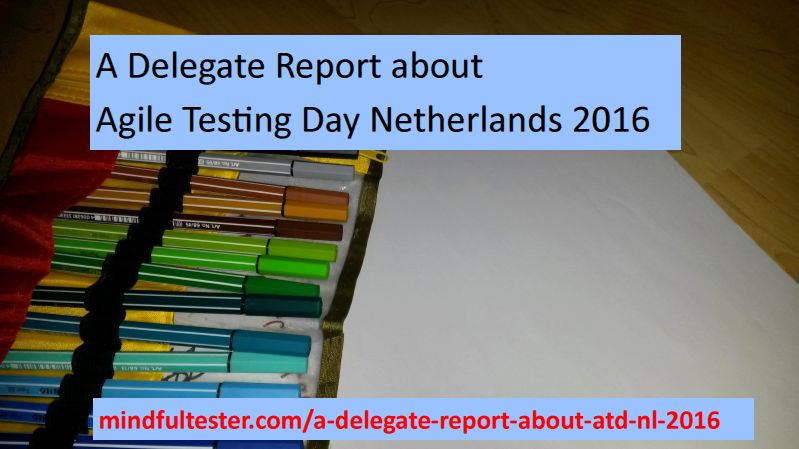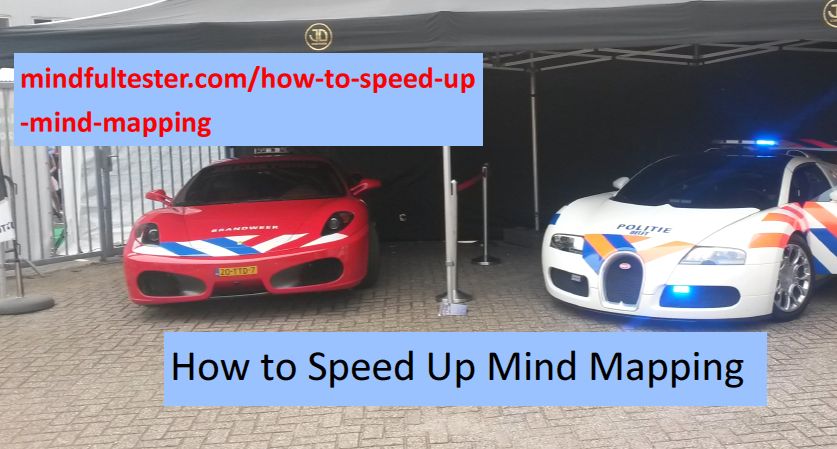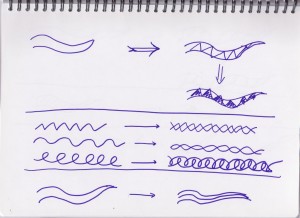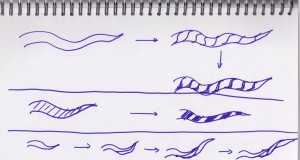A few weeks ago I had ordered the afternoon ticket which included the last sessions of the afternoon, a dinner, and the evening sessions. (I am still figuring out, what an afternoon actually is.) A complete day filled with sessions would spoil my appetite for knowledge.
Luckily I was right.
Open Space
One of the strangest elements of the conference was the Open Space. It was a group of testers looking for answers and testers willing to share those. It was a setting requiring special attention and a good moderator. Alex Schladebeck took her role seriously by pointing out the rules (Look mom. Without slides!) and using her candour to illustrate several examples. With more questions than available slots two groups started discussing their questions separately.
Once again I noticed that there was not a single right answer. Looking at the context was very important. Attendees go to a conference to get more insights or answers for questions. And an open space is a safe environment to exchange thoughts with other peers.
Nowhere And Back Again
Thom Bradford is An American in Berlin. He was using cue cards like Gambit. No special effects were used, so the stage was not damaged during his talk. He recalled his last decades as a software engineer, who had some unpleasant experiences. It was obvious that he was reluctant to switch company.
Thom described the symptoms of companies which he tried to avoid: “Monolithic piece of code” or “Working students” assigned to solve bugs. Then he mentioned Drive of Daniel Pink. Good companies looked at
- Autonomy
- Mastery
- Purpose
It led to the following situation. He had to break mastery: he showed Clojure to appalled Java programmers.
Thom had real doubts about code coverage as KPI or Key Performance Indicator. During the presentation he started an automated test, which showed an impressive 100 % coverage and only positive test results. Clean Code and TDD were better than code coverage. This sounded like a SOLID advice to me. (Pun intended).
The Need For Speed
Emanuil Slavov had somehow dehydrated his ATD 2015 talk to 30 minutes. And he had more to tell than it was humanly possible in the allotted time slot. So the speed was really necessary. It was Flash as a Speaker.
With impressive numbers he showed the reduction of automated tests from 3 hours to 3 minutes.
“Three minutes sounded nice, so we aimed on this limit.”
A lot of measures sounded logical in hindsight like a separate test environment and a test database, which had a minimal set of records. There was also an unexpected (temporary) setback like moving to containers.
Emanuil also referred to three books:
- The Goal:A Process of Ongoing Improvement
- Toyota Kata
- Flashboys
I had read only one. Number 3 was unexpected.
Collaborative Infrastructure Delivery
“This session will be more technical than the previous one.”, Christoph Lukas began.
I smiled inwardly.
Infrastructure as a code has the same characteristics as code. Using TDD he first developed a test. The first test run led to an error. Of course! Nothing was executed or set up. Using a flurry of Xterms (?) he slowly built the desired environment with components.
Workshop previously known as Understanding and testing RESTful Web Services
Mark Winteringham introduced the delegates to Postman, which can be dowloaded for free from getpostman.com. This tool looked to me as a small and compact tool. Ideal to explore the interface.
In the briefing Mark explained, how http is used. He introduced his thoughts about web testing and then encouraged the attendees to go to explore his example web service.
Because of some technical restrictions I paired with another tester. I fell in a familiar trap: test without note taking.
(What could possibly go wrong in 10 minutes? A lot.)
Mark did a debriefing which provided a decent way to catch up with my notes.
In between I discussed the use of SoapUI with another tester. It was a more powerful tool with a subscription.
How we connect to the Internet of Things
In the last keynote at 08:15 in the afternoon Bart Knaack and James Lyndsay had a look at the latest hottest topic IoT or Internet of Things. Or Ignore other Things :). They started to model the internet and then focused on Things.
“This is Thing”, Bart explained.
An orange super hero was shown on the slide.
Then the gentlemen connected an electronic device with the Internet utilising IFTTT or IF This, Then That. This rule based web service was used to change the behaviour of the device i.e. flashing in the assigned colour in the assigned frequency. A Twitter message led to pink flashing LEDs laid out in a circle. It was cumbersome to connect with the smartphones of the attendees. Establishing the right connection for testing was really difficult.
Was IoT really different from other systems under Test? There was no difference with GSM testing on a higher level: protocol testing was demonstrated by 3 processes impersonated by Bart, James, and Alex.
Then I got the message:
- Look at the differences in technologies.
- Find a way to address them.
- Look at tests performed in the past and
- Reuse those test ideas.
And then
I hurried to catch my bus. I did not wait until the last one. This one was big enough for me.





